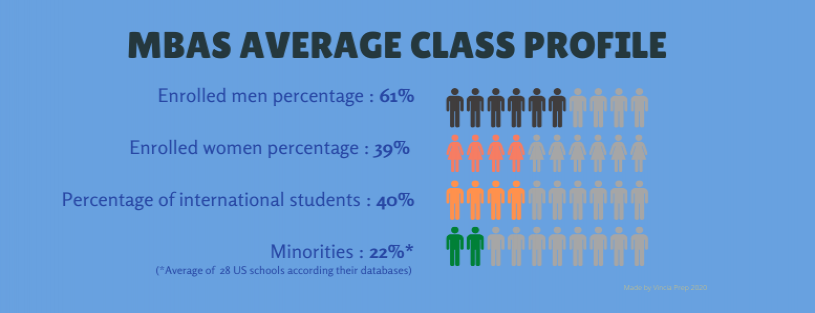
Are MBA programs seeking more women and international students?
Today, MBA programs are seeking to diversify their student populations. When sifting through class profiles on business school websites, the percentage of international students and women enrolled in the program are among the first details listed. These demographics are assets to business education as they can provide unique insights in a class dynamic. Problem solving and developing solutions become more realistic with a variety of perspectives. Fitting into one of these demographics, when combined with a competitive GMAT score and powerful CV, can give a candidate a slight advantage over others.
In an increasingly globalized world, an international dynamic to an MBA program is a considerable advantage. Business today is conducted on the global stage, which creates a real need for experience in intercultural communication and foreign languages. Students arriving from other countries can not only provide these unique skills, but also bring different solutions in how to manage people and materials. An international student body also provides the added bonus of a richer network of alumni. As developing countries continue to expand their economies, students with an insight into these regions are an asset to any MBA program.
Generally, women outnumber men at all levels of education, but business programs have been the long-standing exception to this rule. But today, being a woman adds an undeniable edge to an MBA application. More female CEOs are found amongst fortune 500 companies today than ever before. As companies seek to bridge gender disparities at all levels, there is a real need for women in the highest ranks of management. In 2019, the Forté Foundation has reported a 6.2% jump in women's MBA enrollment in the last 8 years. Market intelligence reports from the GMAC show a 6.8% increase over the last ten years in the total number of women enrolling for the GMAT, now accounting for 46.3% of test takers.
The moral of the story is that if you're hesitating between applying abroad and in your home country, you should seriously consider applying abroad since you will likely be able to gain acceptance into a higher ranked MBA program than you would in your home country. In addition, we've found over the last 10 years that women can score on average 20 points below their male counterparts on the GMAT and still be accepted into schools thanks to the fact that fewer women apply to MBA programs than men. Although, it's obviously best if you can score the MBA program's median GMAT score.

The table below provides a breakdown of the statistics for international and female students in MBA programs along with general acceptance rates for the graduating class of 2020-2021. This information shows a general increase of women in business schools and a concentration of international students in top-ranked schools and in MBA programs inside and outside of the United States.
|




